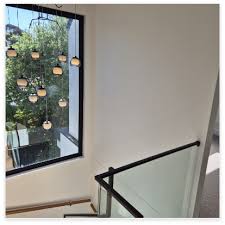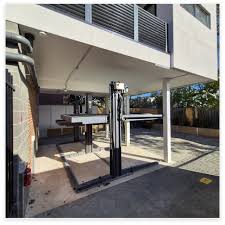
granny flat builders https://www.prevailinghomes.com.au/
Granny flat builders play a key role in transforming underused backyard space into functional, attractive secondary dwellings that provide income, space for family, or long-term flexibility. Whether you are considering an attached annex, a detached studio, or a full one-bedroom unit, understanding the process from planning to handover helps ensure a successful project. This guide outlines what to expect, how to choose the right team, and how to make your new dwelling both comfortable and compliant with local regulations.
Why install a granny flat? The benefits are many: they provide affordable rental income, create comfortable housing for ageing relatives, give young adults a private space close to the family home, and increase property value. For many homeowners, the ability to retain control of a rental asset on their own property is especially appealing. Modern granny flats deliver compact, efficient living without sacrificing design quality—when built by experienced granny flat builders.
Planning and approvals: Before builders break ground, you must navigate planning rules and building approvals. Regulations vary widely by locality: some councils allow granny flats as permitted development under certain size and setback conditions, while others require development applications. Key considerations include site coverage, maximum floor area, privacy setbacks, stormwater management, and parking requirements. A reputable building company often assists with documentation, site assessment, and liaising with local authorities to streamline approvals.
Design choices: Granny flats come in many layouts—studio, one-bedroom, two-bedroom, or flexible modular configurations. Design priorities should reflect intended use. For independent living, prioritize privacy, storage, and a full kitchen. For a rental, maximize floor area efficiency and durable finishes. Open-plan living with compact kitchens, clever built-in storage, and versatile furniture helps small spaces feel larger. Consider natural light and cross-ventilation to enhance comfort and reduce reliance on artificial climate control.
Materials and construction methods: Builders offer a range of construction techniques, from traditional brick-and-mortar to lightweight timber framing and modular panels. Each approach has pros and cons: masonry offers durability and thermal mass; timber framing can be faster and more cost-effective; modular construction can significantly shorten on-site time and reduce weather delays. Insulation, glazing, and external cladding choices influence energy performance, maintenance needs, and aesthetic appeal. Discuss warranty, structural guarantees, and maintenance plans with your builder before committing.
Energy efficiency and sustainability: Incorporating energy-efficient design into a granny flat enhances comfort and reduces operating costs. Orientation for passive solar gain, adequate insulation, double-glazed windows, LED lighting, and efficient appliances contribute to a lower energy footprint. Consider solar photovoltaic systems, rainwater harvesting, and greywater reuse where permitted. Sustainable materials and low-VOC finishes improve indoor air quality and long-term value. Many builders now offer sustainability packages tailored to the site and budget.
Costs and financing: The price of a granny flat depends on size, finishes, site complexity, and local labour costs. A basic studio may be relatively affordable, while a fully finished one- or two-bedroom unit with high-end appliances and landscaping will cost more. Budget realistically for site works (excavation, retaining walls, drainage), utility connections (water, sewer, electricity), and landscaping. Some lenders accept granny flats as allowable assets when assessing financing, especially if intended for rental income. Obtain detailed quotes and compare fixed-price contracts to avoid unexpected expenses.

Choosing the right granny flat builders: Selecting an experienced and reputable builder is essential. Look for companies with specific experience in granny flats, strong portfolios, and positive client reviews. Check licences, insurance cover, and references. A clear contract should specify timelines, payment schedule, inclusions, exclusions, and dispute resolution mechanisms. Visit completed projects if possible and ask about aftercare—good builders provide warranties and respond promptly to post-construction issues.
Project timeline: Typical timelines vary by project type. A straightforward, prefabricated unit can be delivered and installed in weeks, while a custom-built granny flat requiring site excavation, foundations, and local approvals may take several months from design to completion. Delays can arise from weather, supply chain issues, or council processing times. A qualified builder will provide a realistic schedule and keep you informed of progress and any changes.
Interior fit-out and finishes: Thoughtful interior design makes small spaces highly liveable. Choose durable, low-maintenance finishes for kitchens and bathrooms. Open shelving and multi-functional furniture can increase storage without cluttering the floor plan. Consider accessibility features if the granny flat will house elderly occupants—level thresholds, wider doorways, and grab rails can be integrated without compromising style. Good lighting design, both ambient and task, enhances the sense of space and comfort.
Landscaping and outdoor living: Outdoor space significantly increases the usability and appeal of a granny flat. Decks, patios, and privacy landscaping create separate outdoor zones and can be planned to minimize maintenance. Rain gardens and permeable paving help manage stormwater while enhancing biodiversity. When designing outdoor areas, consider privacy between main house and granny flat and how circulation paths will function for both occupants.
Common pitfalls and how to avoid them: Underestimating total costs, skimping on site investigation, and choosing the cheapest builder without checking credentials are frequent mistakes. Avoid scope creep by finalising design details before construction starts. Insist on a written contract with clear milestones. Engage a quantity surveyor or independent consultant if the project is large or technically complex.
Value and return on investment: Well-designed granny flats can yield strong returns through rental income and increased resale value. Even if rental income is modest, the flexibility of added living space often outweighs the initial outlay. Consider long-term objectives—whether to rent, house family, or boost property value—and design accordingly.
Final advice: Successful granny flat projects combine careful planning, quality design, and a trusted builder. Start with a clear brief, consult experienced granny flat builders early, and prioritise compliance and build quality. With the right team, a granny flat becomes a valuable, flexible asset that enhances lifestyle and property potential.
Whether you are adding accommodation for family, creating a rental asset, or making the most of your land, working with specialist granny flat builders ensures the finished result matches your needs and expectations. Do your research, ask the right questions, and plan for both immediate needs and future flexibility.